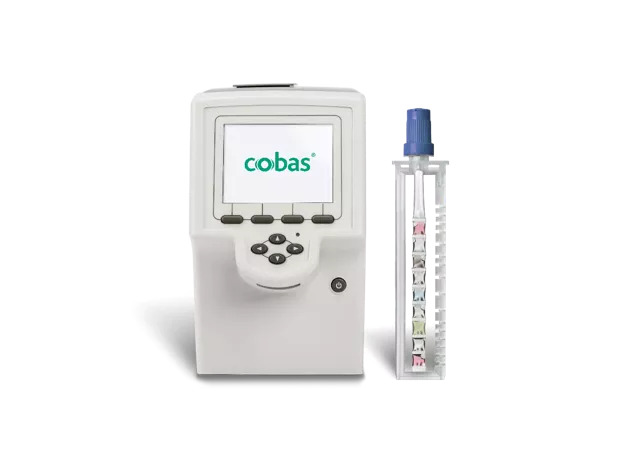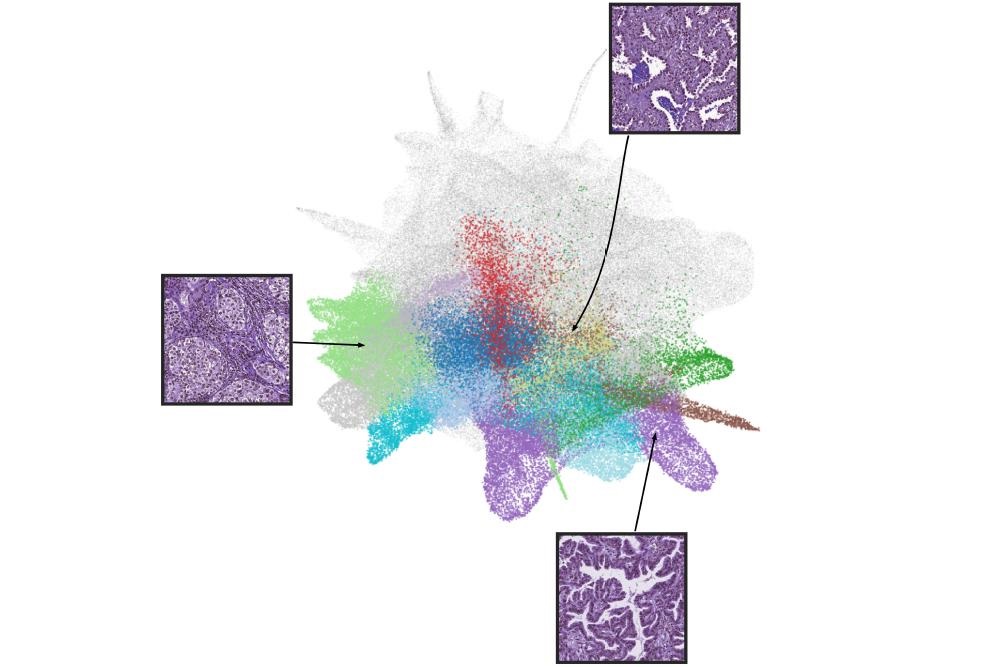Genomic Sequencing Identifies Deadly Bloodstream Infection
|
By LabMedica International staff writers Posted on 06 Apr 2016 |

Image: Sarocladium kiliense after 10 days’ growth on Sabouraud-Dextrose Agar at 30 °C (Photo courtesy of Thunderhouse4-yuri).
The differentiation between fungal infections originating from a single contaminated point source and those independently acquired from the environment is often difficult.
Despite modern advances in technology to control fungal contamination in clinical settings, fungi are continuously implicated in clusters or outbreaks of infections particularly among immunosuppressed patients.
An international team of scientists led by those at the Centers for Disease Control and Prevention (Atlanta, GA, USA) used whole-genome sequence typing (WGST) to investigate an outbreak of Sarocladium kiliense bloodstream infections (BSI) associated with receipt of contaminated anti-nausea medication among oncology patients in Colombia and Chile during 2013–2014. There were 25 outbreak isolates, 18 from patients and 7 from medication vials, and 11 control isolates unrelated to the outbreak, were subjected to WGST to elucidate a source of infection.
The 36 DNA samples were prepared for Illumina sequencing (Illumina, San Diego, CA, USA) by using the KAPA Biosystems Library Preparation with Standard PCR kit (KAPA Biosystems; Wilmington, MA, USA) protocol with a modified 8-bp index. All 36 libraries were sequenced to a read length of 100 bp on the Illumina HiSeq 2500 system. All outbreak isolates were nearly indistinguishable, less than five single-nucleotide polymorphisms, and more than 21,000 single-nucleotide polymorphisms were identified from unrelated control isolates, suggesting a point source for this outbreak.
The authors concluded that their study highlighted the utility of advanced molecular methods to investigate outbreaks involving rare fungi. Next-generation sequencing and bioinformatics analyses will remain critical molecular epidemiology tools in such epidemiologic investigations. David Engelthaler, PhD, Director of Programs and Operations for the Translational Genomic Research Institute (Flagstaff, AZ, USA) and coauthor of the study said, “The use of whole-genome sequence typing (WGST) to investigate fungal outbreaks has become integral to epidemiologic investigations. Our WGST analysis demonstrated that the patient isolates from Chile and Colombia were nearly genetically indistinguishable from those recovered from the unopened medication vials, indicating the likely presence of a single-source infection.” The study was published in the March 2016, issue of the journal Emerging Infectious Diseases.
Related Links:
Centers for Disease Control and Prevention
Illumina
Translational Genomic Research Institute
Despite modern advances in technology to control fungal contamination in clinical settings, fungi are continuously implicated in clusters or outbreaks of infections particularly among immunosuppressed patients.
An international team of scientists led by those at the Centers for Disease Control and Prevention (Atlanta, GA, USA) used whole-genome sequence typing (WGST) to investigate an outbreak of Sarocladium kiliense bloodstream infections (BSI) associated with receipt of contaminated anti-nausea medication among oncology patients in Colombia and Chile during 2013–2014. There were 25 outbreak isolates, 18 from patients and 7 from medication vials, and 11 control isolates unrelated to the outbreak, were subjected to WGST to elucidate a source of infection.
The 36 DNA samples were prepared for Illumina sequencing (Illumina, San Diego, CA, USA) by using the KAPA Biosystems Library Preparation with Standard PCR kit (KAPA Biosystems; Wilmington, MA, USA) protocol with a modified 8-bp index. All 36 libraries were sequenced to a read length of 100 bp on the Illumina HiSeq 2500 system. All outbreak isolates were nearly indistinguishable, less than five single-nucleotide polymorphisms, and more than 21,000 single-nucleotide polymorphisms were identified from unrelated control isolates, suggesting a point source for this outbreak.
The authors concluded that their study highlighted the utility of advanced molecular methods to investigate outbreaks involving rare fungi. Next-generation sequencing and bioinformatics analyses will remain critical molecular epidemiology tools in such epidemiologic investigations. David Engelthaler, PhD, Director of Programs and Operations for the Translational Genomic Research Institute (Flagstaff, AZ, USA) and coauthor of the study said, “The use of whole-genome sequence typing (WGST) to investigate fungal outbreaks has become integral to epidemiologic investigations. Our WGST analysis demonstrated that the patient isolates from Chile and Colombia were nearly genetically indistinguishable from those recovered from the unopened medication vials, indicating the likely presence of a single-source infection.” The study was published in the March 2016, issue of the journal Emerging Infectious Diseases.
Related Links:
Centers for Disease Control and Prevention
Illumina
Translational Genomic Research Institute
Latest Microbiology News
- POC STI Test Shortens Time from ED Arrival to Test Results
- Integrated Solution Ushers New Era of Automated Tuberculosis Testing
- Automated Sepsis Test System Enables Rapid Diagnosis for Patients with Severe Bloodstream Infections
- Enhanced Rapid Syndromic Molecular Diagnostic Solution Detects Broad Range of Infectious Diseases
- Clinical Decision Support Software a Game-Changer in Antimicrobial Resistance Battle
- New CE-Marked Hepatitis Assays to Help Diagnose Infections Earlier
- 1 Hour, Direct-From-Blood Multiplex PCR Test Identifies 95% of Sepsis-Causing Pathogens
- Mouth Bacteria Test Could Predict Colon Cancer Progression
- Unique Metabolic Signature Could Enable Sepsis Diagnosis within One Hour of Blood Collection
- Groundbreaking Diagnostic Platform Provides AST Results With Unprecedented Speed
- Simple Blood Test Combined With Personalized Risk Model Improves Sepsis Diagnosis
- Blood Analysis Predicts Sepsis and Organ Failure in Children
- TB Blood Test Could Detect Millions of Silent Spreaders
- New Blood Test Cuts Diagnosis Time for Nontuberculous Mycobacteria Infections from Months to Hours
- New Tuberculosis Test to Expand Testing Access in Low- and Middle-Income Countries
- Rapid Test Diagnoses Tropical Disease within Hours for Faster Antibiotics Treatment
Channels
Clinical Chemistry
view channel
New ADLM Guidance Provides Expert Recommendations on Clinical Testing For Respiratory Viral Infections
Respiratory tract infections, predominantly caused by viral pathogens, are a common reason for healthcare visits. Accurate and swift diagnosis of these infections is essential for optimal patient management.... Read more
3D Printed Point-Of-Care Mass Spectrometer Outperforms State-Of-The-Art Models
Mass spectrometry is a precise technique for identifying the chemical components of a sample and has significant potential for monitoring chronic illness health states, such as measuring hormone levels... Read more.jpg)
POC Biomedical Test Spins Water Droplet Using Sound Waves for Cancer Detection
Exosomes, tiny cellular bioparticles carrying a specific set of proteins, lipids, and genetic materials, play a crucial role in cell communication and hold promise for non-invasive diagnostics.... Read more
Highly Reliable Cell-Based Assay Enables Accurate Diagnosis of Endocrine Diseases
The conventional methods for measuring free cortisol, the body's stress hormone, from blood or saliva are quite demanding and require sample processing. The most common method, therefore, involves collecting... Read moreMolecular Diagnostics
view channel
Four-In-One Molecular Test Detects and Differentiates Among Most Prevalent Respiratory Viruses in 20 Minutes
The U.S. Centers for Disease Control and Prevention (CDC) has reported that respiratory diseases in the United States reached high levels during the recent autumn and winter seasons, with SARS-CoV-2 leading... Read more.jpeg)
First-Line PSA Testing More Cost-Effective Than First-Line MRI for Prostate Cancer Screening
Current prostate cancer (PCa) screening protocols typically begin with prostate-specific antigen (PSA) testing, which, if elevated, may lead to further assessment using multiparametric magnetic resonance... Read more
Proteomics Platform Identifies Proteins in Blood to Give Cancer Warning 7 Years before Diagnosis
To improve cancer survival rates, it's crucial to understand the disease during its initial stages. Research involving data from thousands of cancer patients has uncovered exciting findings about how blood... Read moreHematology
view channel
Next Generation Instrument Screens for Hemoglobin Disorders in Newborns
Hemoglobinopathies, the most widespread inherited conditions globally, affect about 7% of the population as carriers, with 2.7% of newborns being born with these conditions. The spectrum of clinical manifestations... Read more
First 4-in-1 Nucleic Acid Test for Arbovirus Screening to Reduce Risk of Transfusion-Transmitted Infections
Arboviruses represent an emerging global health threat, exacerbated by climate change and increased international travel that is facilitating their spread across new regions. Chikungunya, dengue, West... Read more
POC Finger-Prick Blood Test Determines Risk of Neutropenic Sepsis in Patients Undergoing Chemotherapy
Neutropenia, a decrease in neutrophils (a type of white blood cell crucial for fighting infections), is a frequent side effect of certain cancer treatments. This condition elevates the risk of infections,... Read more
First Affordable and Rapid Test for Beta Thalassemia Demonstrates 99% Diagnostic Accuracy
Hemoglobin disorders rank as some of the most prevalent monogenic diseases globally. Among various hemoglobin disorders, beta thalassemia, a hereditary blood disorder, affects about 1.5% of the world's... Read moreImmunology
view channel.jpg)
AI Tool Predicts Cancer Patients’ Response to Immunotherapy
Immune checkpoint inhibitors are a form of immunotherapy drug that enables immune cells to target and destroy cancer cells. At present, the Food and Drug Administration has approved two predictive biomarkers... Read more
Molecular Profiling Improves Diagnosis for Children with High Risk Cancers
Cancer remains the leading cause of disease-related death among children in most developed nations, and approximately one-fourth of these patients are diagnosed with aggressive, high-risk, or relapsed... Read morePathology
view channel
New WHO Reporting System for Lung Cytopathology to Enhance Diagnostic Accuracy
Lung cancer continues to be the most common cause of cancer-related deaths worldwide and ranks as the second most frequently diagnosed cancer in both men and women. The role of lung cytopathology, which... Read more
Self-Taught AI Tool Diagnoses and Predicts Severity of Common Lung Cancer
A computer program powered by artificial intelligence (AI) and trained on nearly half a million tissue images can effectively diagnose cases of adenocarcinoma, the most prevalent type of lung cancer.... Read more
Novel AI-Powered Method for Tissue Analysis Improves Understanding of Disease Pathology
Scientists at Brown University (Providence, RI, USA) and the University of Michigan (Ann Arbor, MI, USA) have created a groundbreaking computational technique to examine complex tissue data, potentially... Read moreTechnology
view channel
Microneedle Patch Detects Skin Cancer Early
Wearable bioelectronics has emerged as a significant innovation in healthcare, especially in the field of biosensing, providing a new method to monitor individual health for both diagnostic and therapeutic purposes.... Read more
New Diagnostic System Achieves PCR Testing Accuracy
While PCR tests are the gold standard of accuracy for virology testing, they come with limitations such as complexity, the need for skilled lab operators, and longer result times. They also require complex... Read moreIndustry
view channel
Roche and Hitachi High-Tech Extend 46-Year Partnership for Breakthroughs in Diagnostic Testing
Roche (Basel, Switzerland) and Hitachi High-Tech (Tokyo, Japan) have renewed their collaboration agreement, committing to a further 10 years of partnership. This extension brings together their long-standing... Read more
Danaher and Johns Hopkins University Collaborate to Improve Neurological Diagnosis
Unlike severe traumatic brain injury (TBI), mild TBI often does not show clear correlations with abnormalities detected through head computed tomography (CT) scans. Consequently, there is a pressing need... Read more
Beckman Coulter and MeMed Expand Host Immune Response Diagnostics Partnership
Beckman Coulter Diagnostics (Brea, CA, USA) and MeMed BV (Haifa, Israel) have expanded their host immune response diagnostics partnership. Beckman Coulter is now an authorized distributor of the MeMed... Read more_1.jpg)









 Reagent.jpg)


.jpg)


